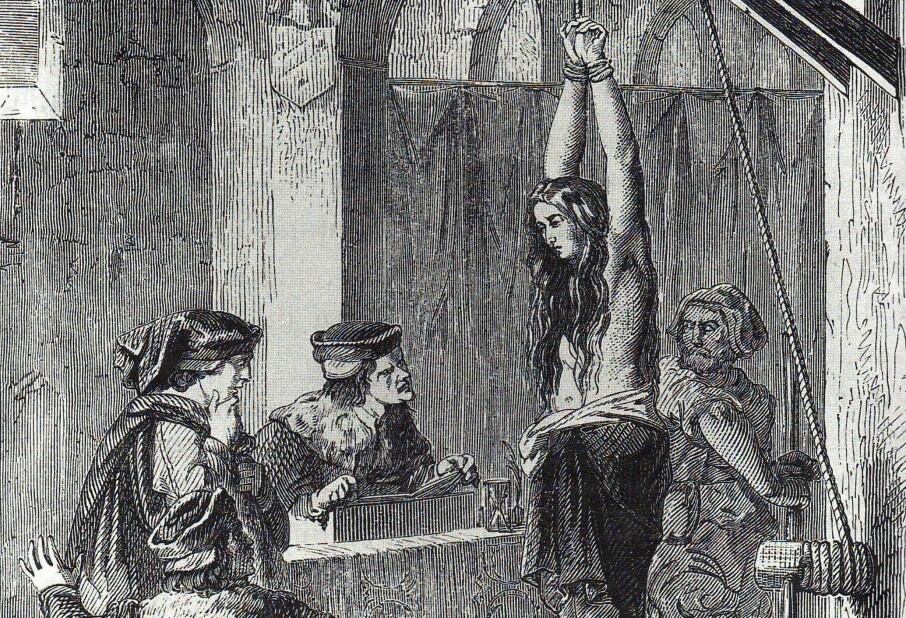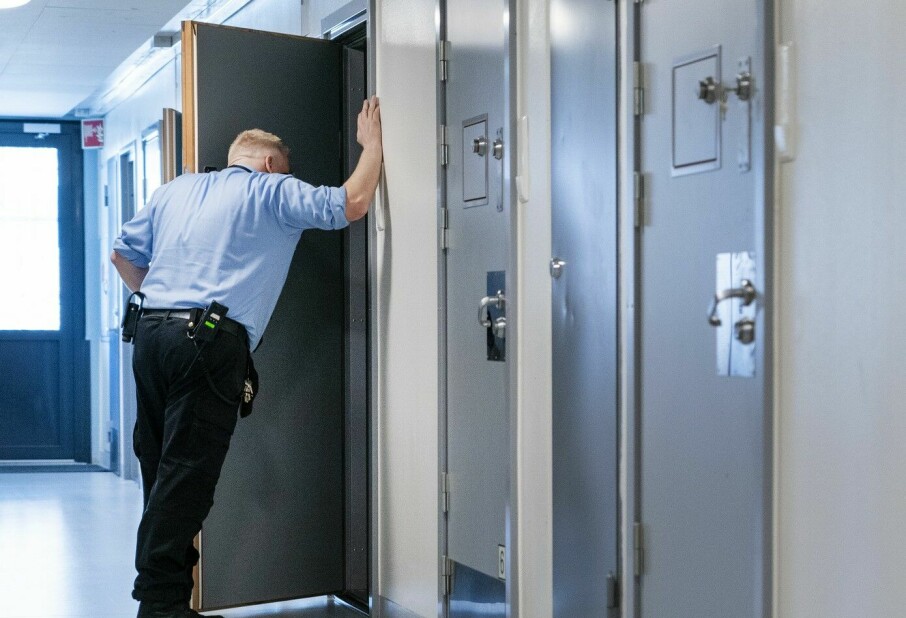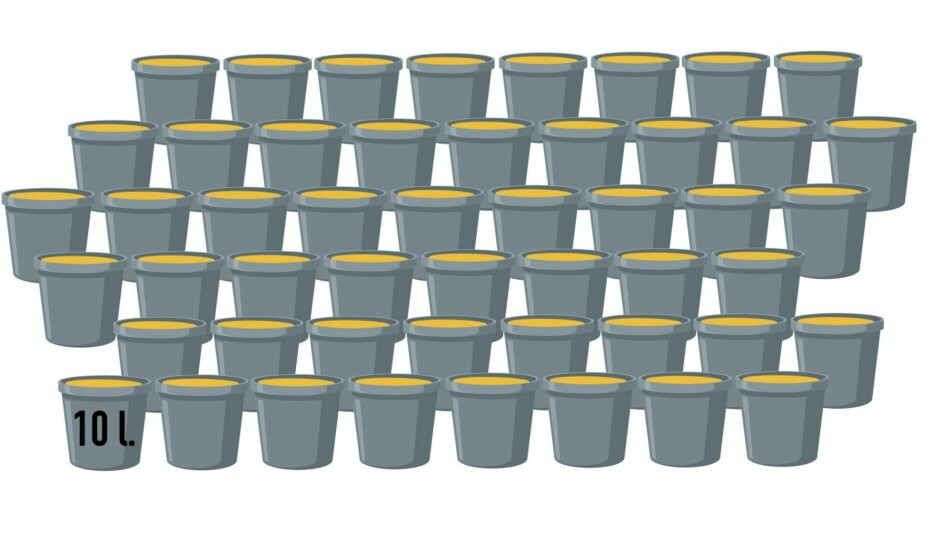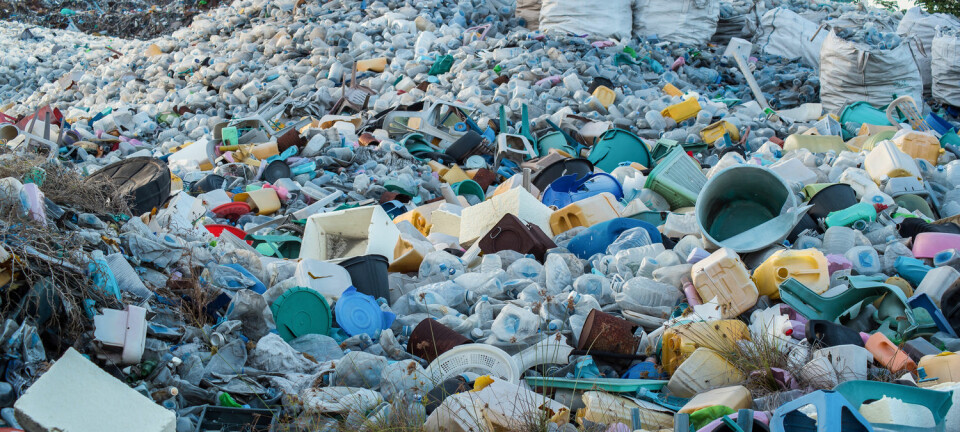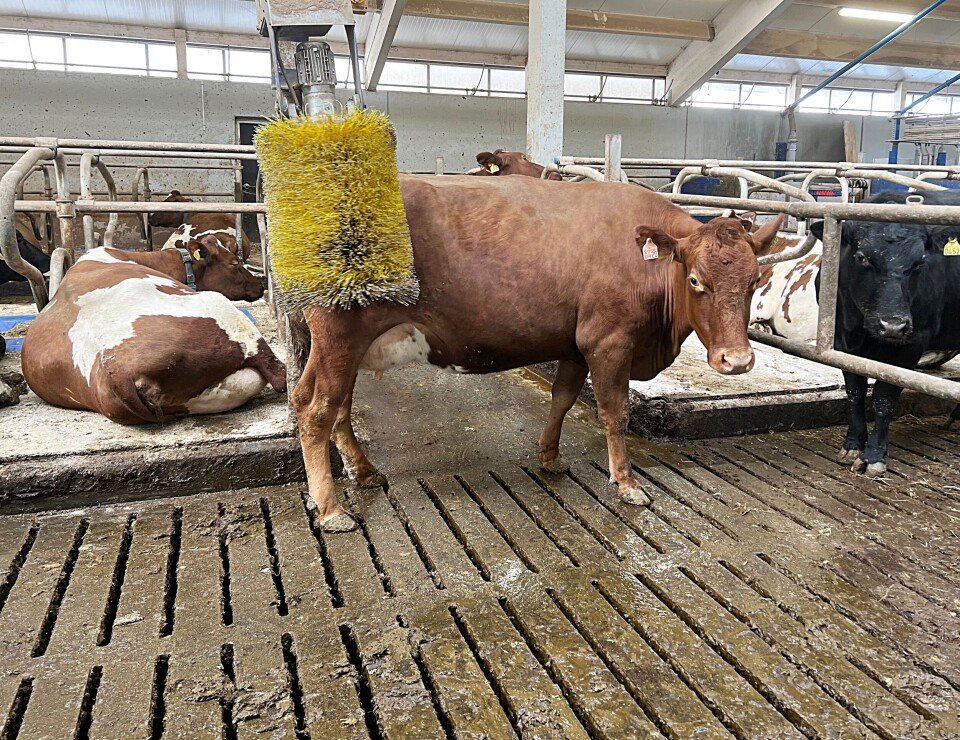
Modern livestock barns have high levels of harmful gases
Ammonia can be harmful to both farmers and animals.
Almost 20 years ago, the Norwegian Parliament decided that all Norwegian dairy cows and other cattle should be allowed to live in free stall barns.
There are currently about 3,000 such free stall barns for milk production, according to the Norwegian Agrarian Association.
About 4,000 Norwegian barns still use tie stalls or stanchions for dairy cows.
More comfortable for the animals
The idea behind the new free stall barns is that the animals are more comfortable when they can roam freely inside the barn. More farmers are planning to build new free stall barns or convert their existing systems.
But now, an NTNU master's student has found that conditions in the new modern barns are concerning.
We’re talking about ammonia.
Most viewed
Ammonia is a gas that forms from the animals’ urine and manure.
Acceptable exposure limits
NTNU master's student Ellen Kristina Baclayon Johansen measured the amount of ammonia in three modern free stall dairy barns.
Johansen attached the measuring equipment to three farmers. They wore this inside their barns during chores.
The equipment measured how much ammonia the livestock farmers were exposed to.
The Norwegian Labour Inspection Authority has set the exposure limit to 15 parts per million (ppm). However, several consecutive measurements should show less than 15 percent of this threshold value, that is 2.5 ppm, to ensure that the farmer is not exposed to health-hazardous amounts of ammonia gas.
These exposure limits are stricter when there is other simultaneous chemical exposure, which is often the case in a barn. Johansen measured four other gases in addition to ammonia in the barns she visited, plus two types of dust that might pose a health hazard.
Johansen points out that taking a single measurement below the exposure limit is not sufficient when visiting a barn. She spent a week in each of the barns where she did her measurements.
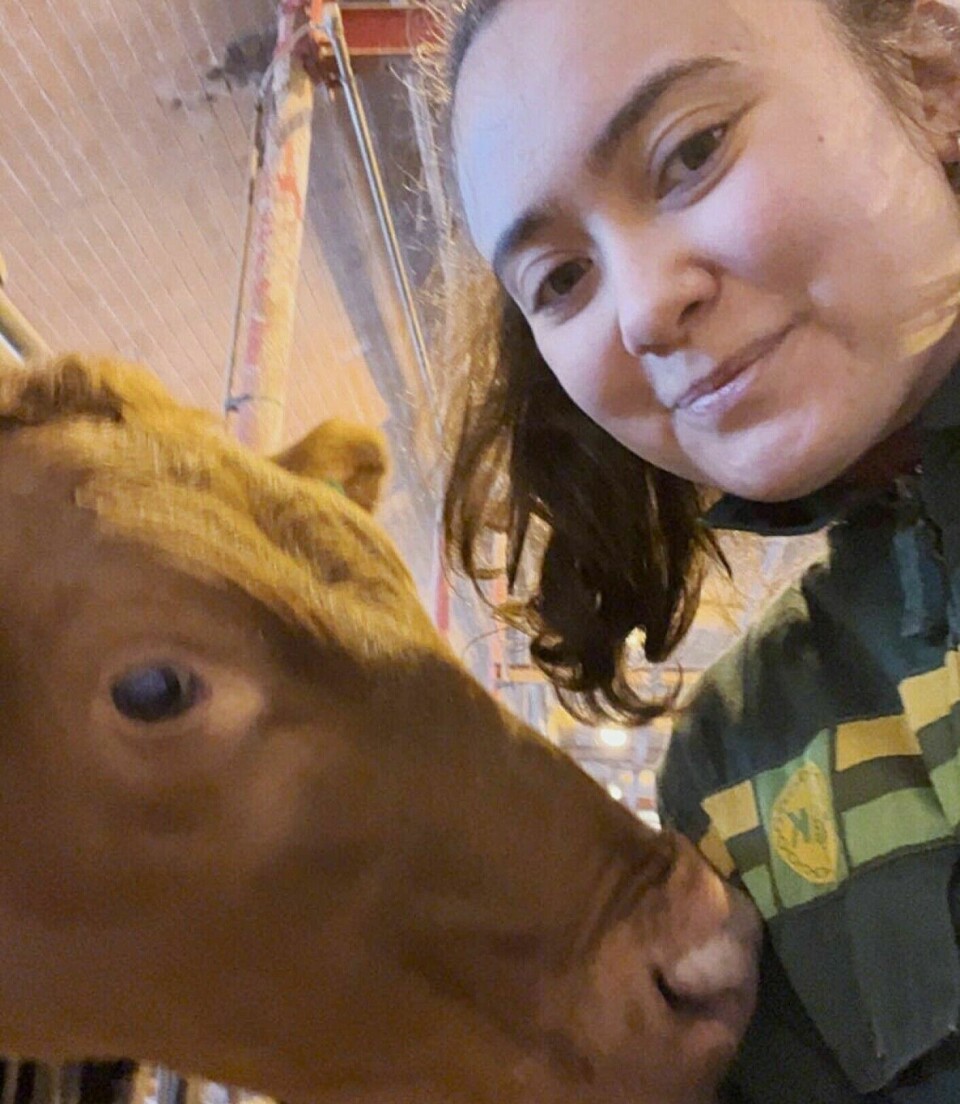
Findings from farm visits
“The average value I measured was around 9 ppm in two of the barns, which is too high according to the Norwegian Labour Inspection Authority's assessment criteria,” Johansen says. “The amount of ammonia I measured was often as high as 20 to 40 ppm in the barns."
She believes that the exposure might even have been even higher than what she measured. More on that a little later.
Expert cautions about new barns
Hans Thore Smedbold is an occupational hygienist and researcher at NTNU’s Department of Occupational Medicine. He specialises in exposure to hazardous substances and is one of several who have guided Johansen in her master's degree.
“We can’t rule out that farmers might be overexposed to ammonia in any of the three modern barns where Johansen took her measurements,” Smedbold says.
The researcher is concerned that all Norwegian cattle barns are now being converted into precisely the type of barn where Johansen has measured the high ammonia levels.
“If we don’t take action now, we risk that the new modern barns won’t be good enough. This could continue to cause health problems for both the farmers and the animals for a long time to come,” he says.
Several important findings
Johansen found that the average concentration of ammonia was quite similar in both the largest and smallest barns.
However, an important difference was that the farmer in the largest barn spent many more hours in the barn than the farmer in the smallest barn.
“Although the gas levels in the air in the barns were initially relatively similar, the farmer in the largest barn had much higher exposure to the gas because he was exposed for longer,” she says.
More gas than what was measured
Johansen also discovered that the ammonia levels could be even higher than what she actually measured.
“Chlorine gas pulls the ammonia measurement in a negative direction. This can contribute to less gas being registered than what is actually in the barn,” she says.
Smedbold explains that the measuring instrument Johansen used is negatively affected by chlorine gas.
Chlorine gas can form when farmers use sodium hypochlorite for cleaning.
Sodium hypochlorite is found in some of the cleaning agents for milking machines and is the same substance that is added to water in swimming pools. The wash water often ends up mixed with the manure.
Can trigger asthma
“Chlorine is also known to react with urine and produce chloramine in swimming pools. This can trigger or worsen asthma,” Smedbold says. “As far as we know, chloramine exposure in barns has not been investigated. I hope we will have the opportunity to look into this in more detail.”
Smedbold believes that Johansen’s findings from her master's degree work are extremely important and should impact how free stall barns are built and operated.
Farmers’ health and animal welfare are both at stake.
How dangerous is ammonia gas?
Ammonia is a chemical compound of nitrogen and hydrogen. The gas is produced when the nitrogen in faeces and urine breaks down.
Ammonia gas has a pungent odour that many probably associate with urine or with the cleaning agent ammonium chloride, a solution of this gas in water.
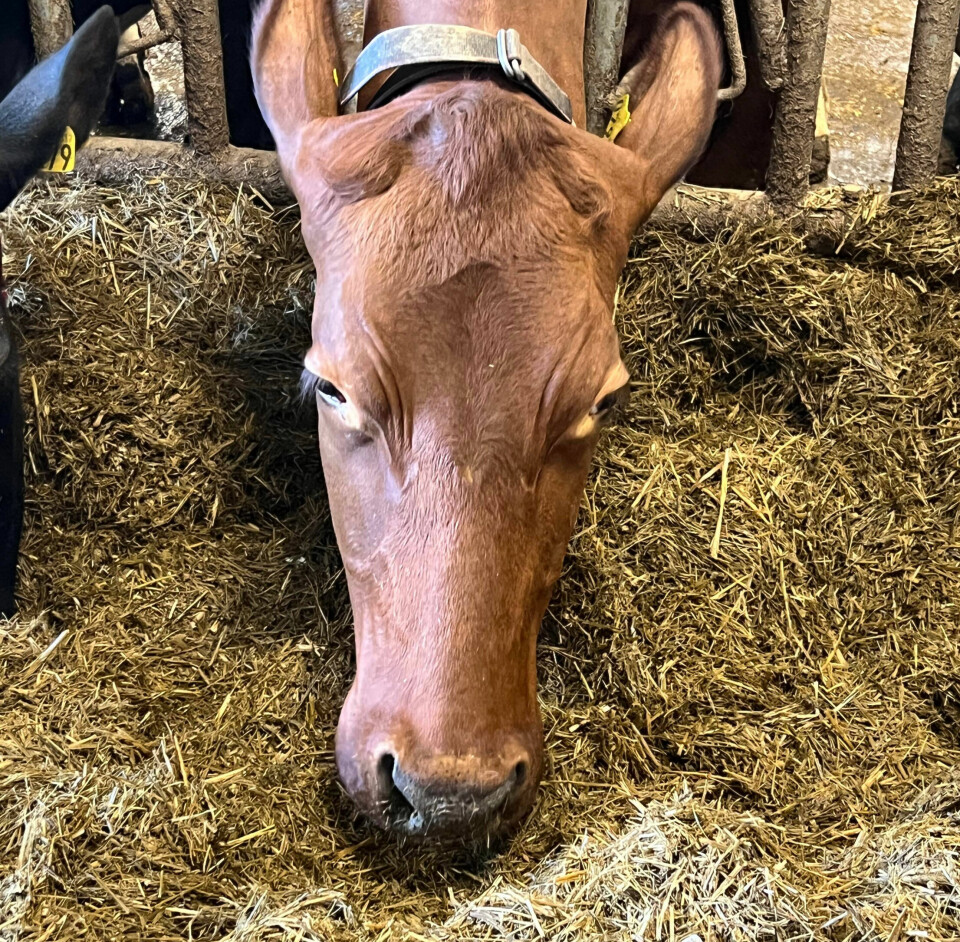
Brief exposure to ammonia gas, where your nose burns a little, is usually not dangerous. Even a 5 ppm level can be experienced as unpleasant.
In the case of high, acute exposure to ammonia, oedema of the larynx and pulmonary oedema with fatal outcomes can occur. Asthma symptoms have been reported from high exposure to ammonia, as well as worsening of pre-existing asthma not caused by the work environment, according to the Norwegian Labour Inspection Authority (link in Norwegian).
But working with elevated levels of ammonia in the air for much of the workday over a long period of time can also cause or worsen diseases such as asthma. The risk can increase further if you are simultaneously exposed to dust and other gases.
“Awareness of the danger of ammonia gas in barns is something that has grown in recent years,” Smedbold says.
However, the dangers have primarily been recognised been from an environmental and climate perspective. Ammonia breaks down to nitrous oxide, which is an important greenhouse gas.
Acid as a ‘solution’
A solution to the basic ammonia problem might be to add acid to neutralise it.
The problem is that this can create an environment in the manure that contributes to the production of yet another problematic greenhouse gas, namely methane.
“This ‘solution’ can also increase the risk of fire and explosion in the barn. We've had several accidents in barns where methane has ignited or exploded,” Smedbold says.
Researchers have also observed that the addition of acid to livestock manure can convert sulphur compounds in the manure into hydrogen sulphide.
“This is a gas that is highly toxic and heavier than air. Several serious accidents involving hydrogen sulphide occur in agriculture every year,” he says.
Solving the environmental problem of fertiliser gas requires taking a comprehensive approach, Smedbold points out.
Otherwise, we risk taking the lives of both farmers and animals, the occupational hygienist warns.
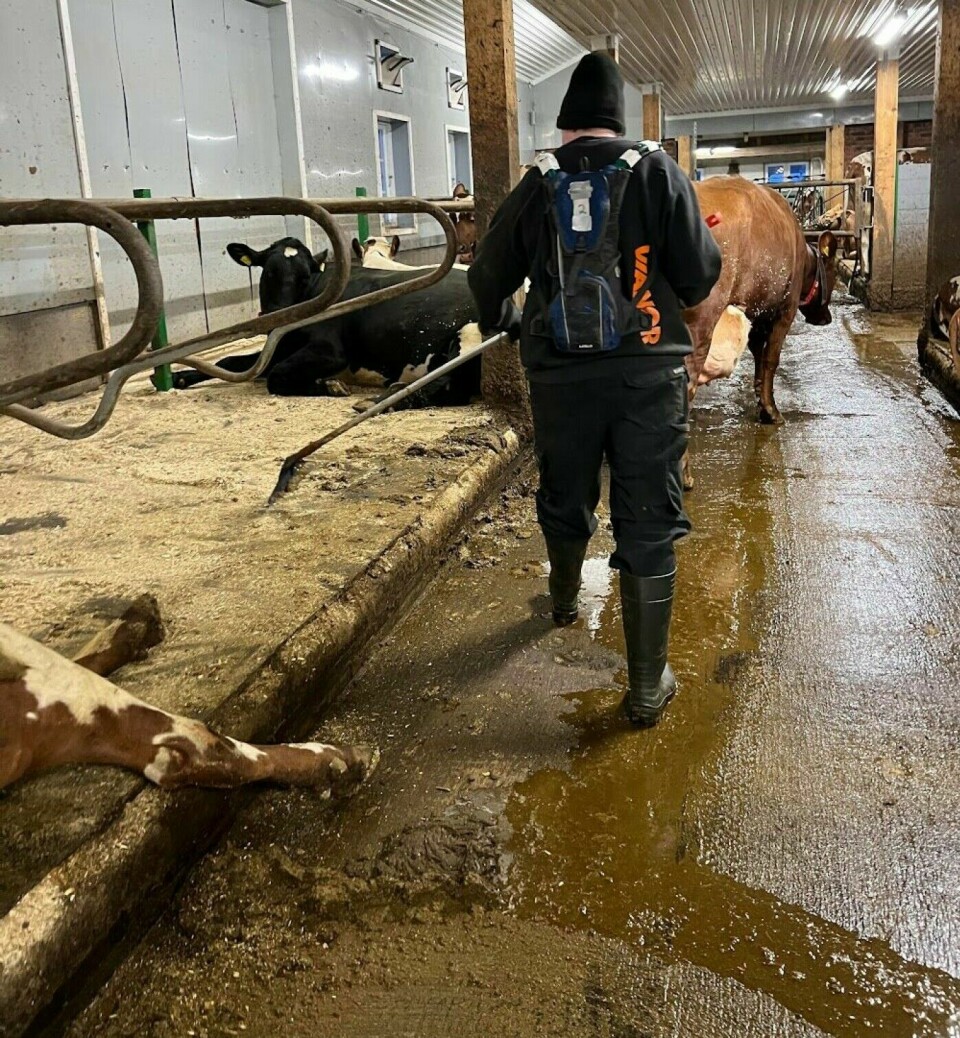
Urine is the problem
The urine from cattle that collects in barns is the main contributor to ammonia being produced.
Norwegian agriculture is now moving away from traditional barns, which had a simple solution for the problem of manure and urine: It fell or flowed through a grate in the floor beneath the animals' hindquarters.
This creates a limited area for gas to develop.
Many tie stall barns also have a manure cellar under the floor, where a 'lid' of drier substances forms on top. This lid slows down the release of ammonia and other gases into the air.
If you've ever looked into a septic tank, perhaps you were struck by how little odour came from all the sewage down there.
“Several free stall barns also use a manure cellar solution, but many farmers who build new barns choose to store the manure outside the barn and not under the floor,” Smedbold says.
Urine and manure all over the floor
In the modern free stall barn, faeces and urine end up all over the floor instead.
This creates a larger surface area for gas to develop.
“Ammonia gas is produced when the urine and faeces are left on or under the barn floor for an extended period,” Smedbold says.
A solution to the problem could be for the farmer to ensure more frequent scraping and emptying of manure from the free stall barns and that wash water from milking facilities is pumped directly into an external fertiliser storage system.
“And then you have to have a system that transports the manure and urine out of the building to an outdoor manure pit,” he says.
Smedbold suggests that the authorities might need to set requirements for how often this has to happen.
Do we care about farmers’ working conditions?
Smedbold thinks it is thought-provoking that we set far fewer requirements for a safe working environment for farmers than we do elsewhere in working life.
“If we had as many accidents in Norwegian industry as we have in Norwegian agriculture, public reactions would be much stronger,” he says.
He notes, for example, that when people go to work in the city and risk being exposed to gas from sewers, they are always equipped with a gas detector.
“Farmers risk being exposed to much higher gas levels. But they have no such safety equipment,” he says. “As far as I know, no water and sewage workers have died due to gas exposure in Norway in the last 20 years.”
However, he adds that there have been several serious accidents due to fertiliser gas poisoning in Norwegian agriculture.
Are chemical exposure limits accurate enough?
Brit Logstein heads the Norwegian project National Centre of Expertise for Occupational Health in Agriculture. She is also a researcher at the Institute for Rural and Regional Research (Ruralis).
“A number of threshold values that are important for agriculture have not been updated since 1978,” Logstein tells sciencenorway.no.
She believes it may be time to review these again, in light of the new knowledge we have gained over the past 45 years.
She points out that ammonia emissions from agriculture also need to be reduced in view of climate change.
She states that adding acid to the manure and urine might seem like a good solution, but that it entails an increased risk of explosion.
How important is farmers' health?
Norwegian farms are becoming increasingly large enterprises with more and more animals.
“This means that farmers spend several hours in the barn every day," Logstein says.
She also questions how knowledgeable the contractors who build new barns are. Are they up to speed on how new barns should be planned and built to ensure proper operation with regard to ammonia exposure?
Logstein urges more discussion on this topic.
———
Translated by Ingrid P. Nuse
Read the Norwegian version of this article at forskning.no
Reference:
Johansen, E.K.B. 'Kartlegging av bønders eksponering for luftbårne forurensninger i løsdriftsfjøs' (Survey of farmers' exposure to airborne pollutants in free stall barns), Master's thesis at NTNU, 2023.











